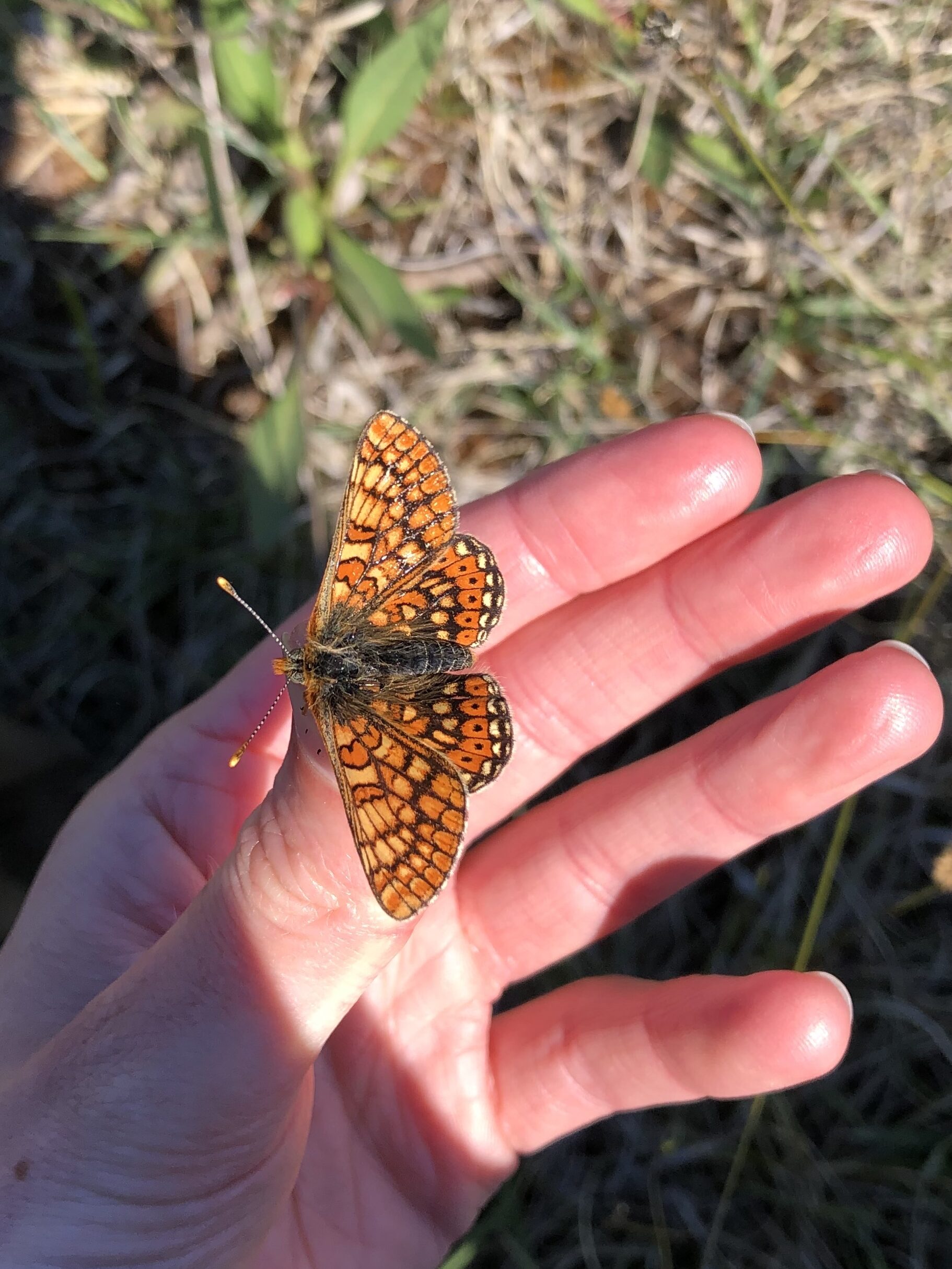Background
Aims
Biodiversity loss is a major concern for conservationists around the world, as the extinction of one species can have a significant impact on an entire ecosystem. Calcareous grasslands are one example of a habitat type that has been decreasing during the last decade and are therefore in need of restoration. These ecosystems are among the most biodiverse ecosystems on the planet, but they are facing numerous threats such as conversion to arable land, overgrazing, and extreme climate events. One way to successfully monitor the effects of restoration and the overall health of an ecosystem is through indicator species, which can function as an early warning system for potential ecological issues. For my master’s thesis, I selected the marsh fritillary butterfly as an indicator species. The marsh fritillary is highly specialised, relying on specific host plant species for its larval stage, which makes it sensitive to changes in its habitat. In Europe, the marsh fritillary butterfly has experienced a dramatic decline in recent years, and the species is now considered vulnerable or even endangered in much of its range. This situation highlights the need for conservation efforts to improve the marsh fritillary butterfly’s status and to protect the critical habitat that it relies on for survival.
- Increase present knowledge about habitat preferences of the marsh fritillary
- Analyse the feasibility of restoring habitat for this species
- Compare larvae and imago (adult stage) densities between years
- Examine the impact of a drought that occurred in 2018 on specific vegetation parameters
